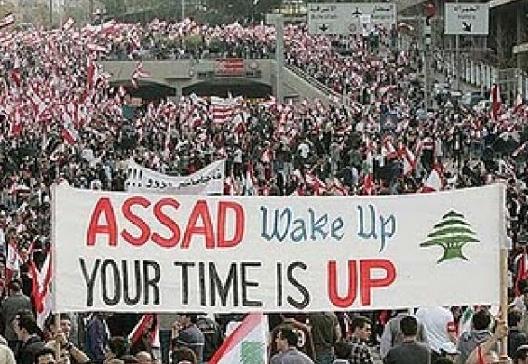Final Data Blogpost on the Arab Sprimg
The Arab Spring Movement was a series of protest, demonstrations, and riots that took place throughout North Africa and the Middle East. These protest were in response to the numerous oppressive dictatorships present in the these countries. The Arab Spring was inspired by the Tunisian revolution in early 2010 and died out in late 2012. Only Tunisia has successfully transitioned to a functioning democracy. The revolution was greatly facilitated by social media which allowed the protesters to circumvent the government controlled media and authorities in order to organize demonstrations.

Visual:
|
The colors of the flags are high contrast to draw the attention of the viewer and create a sense of urgency. They also happen to be the same colors as a caution sign.
|
Genre: Icons
|
Protesters use the Rabia hand symbol on protest flags. This gesture is supposed symbolize the all those who had been beaten, imprisoned or killed by the egyptian army.
|

Visual:
|
The font is bold to create a sense of urgency. The words of emphasis “Assad” and “Up” are the largest, in bold, and in bright red to indicate importance.
|
Symbolism:
|
The sign contains the green cedar symbol which is the symbol of the lebanese flag, The sign also contains all the colors of the lebanese flag which indicates a populist/democratic message.
|

The ever-changing relationship between technology and humanity, and where the two become indistinguishable is what defines the nature of Donna J. Haraway's cyborg theory. A contemporary application of cyborg theory can be no clearer than in the Arab Spring protest movement. The Arab Spring movement was at the intersection of technological and classic protest. Haraway writes "cyborg politics is the struggle for language and the struggle against perfect communication, against the one code that translates all meaning perfectly, the central dogma of phallogocentrism." the Arab Spring movement subverted the classical forms of communication through centralized media and public meeting places and used technology as the vehicle of communication. Haraway also saw cyborg theory as a way to transcend categories from class to gender through the medium of technology. This was demonstrated by the Arab Spring movement by giving a voice to individuals regardless of class. It also showed how insignificant distinctions of class and gender can be by allotting an anonymous identity online, whereby an individual only identifiable by a twitter egg and a username of their choosing can have power in politics.
Social Movement Theory
 The Arab Spring movement is hard to map out as a movement as a whole when it comes to applying social movement theory. This is because there were many "Arab Springs" in many different countries. These different section of the movement had varying degree of success and engaged in some different tactics. The oppression of the people of of many middle-eastern and North African countries by their leaders has been an unexpressed public issue for a long time, but could not be discussed and retaliation organized successfully until the Arab Spring. The Arab spring brought political oppression to be a trending issue, but not quite to the level of a campaign in most countries. Solutions rarely came about, and only Tunisia became an actual democracy. The full spectrum of radicality was expressed in the Arab spring movement, though it was often praised as peaceful resistance, it often turned violent when protesters confronted the police. Often sectarian violence and terrorism erupted during the protest including many Shiite attacks. The movement existed in the chaotic phase of organization, with no central leader, protest were organized on social media and protest were not precisely executed. The demands made by the Arab Spring protesters while very purposeful and remained very unclear and mostly settled on general dissatisfaction with the government. This may be a major reason the movement was a failure as a whole.
The Arab Spring movement is hard to map out as a movement as a whole when it comes to applying social movement theory. This is because there were many "Arab Springs" in many different countries. These different section of the movement had varying degree of success and engaged in some different tactics. The oppression of the people of of many middle-eastern and North African countries by their leaders has been an unexpressed public issue for a long time, but could not be discussed and retaliation organized successfully until the Arab Spring. The Arab spring brought political oppression to be a trending issue, but not quite to the level of a campaign in most countries. Solutions rarely came about, and only Tunisia became an actual democracy. The full spectrum of radicality was expressed in the Arab spring movement, though it was often praised as peaceful resistance, it often turned violent when protesters confronted the police. Often sectarian violence and terrorism erupted during the protest including many Shiite attacks. The movement existed in the chaotic phase of organization, with no central leader, protest were organized on social media and protest were not precisely executed. The demands made by the Arab Spring protesters while very purposeful and remained very unclear and mostly settled on general dissatisfaction with the government. This may be a major reason the movement was a failure as a whole.
No comments:
Post a Comment